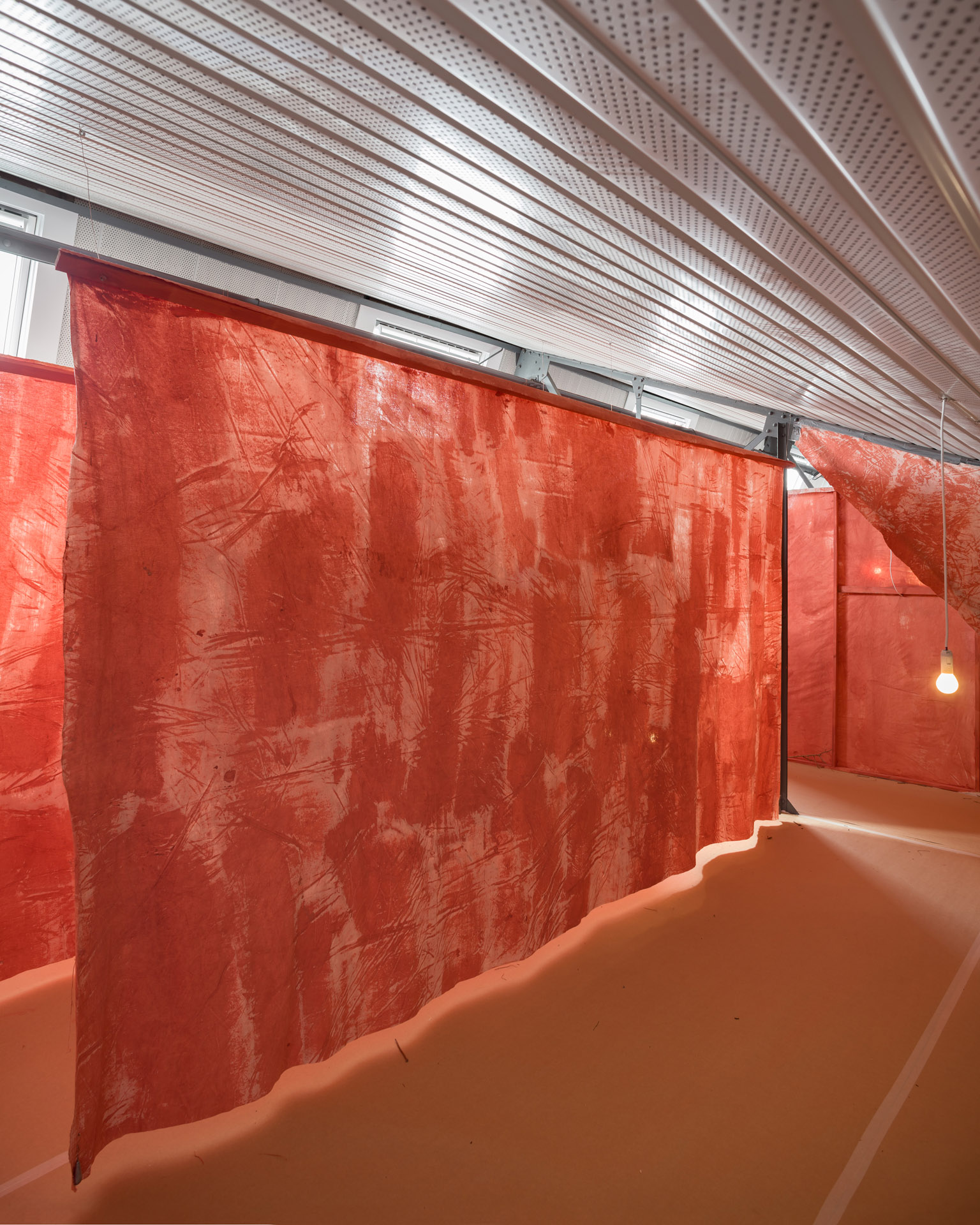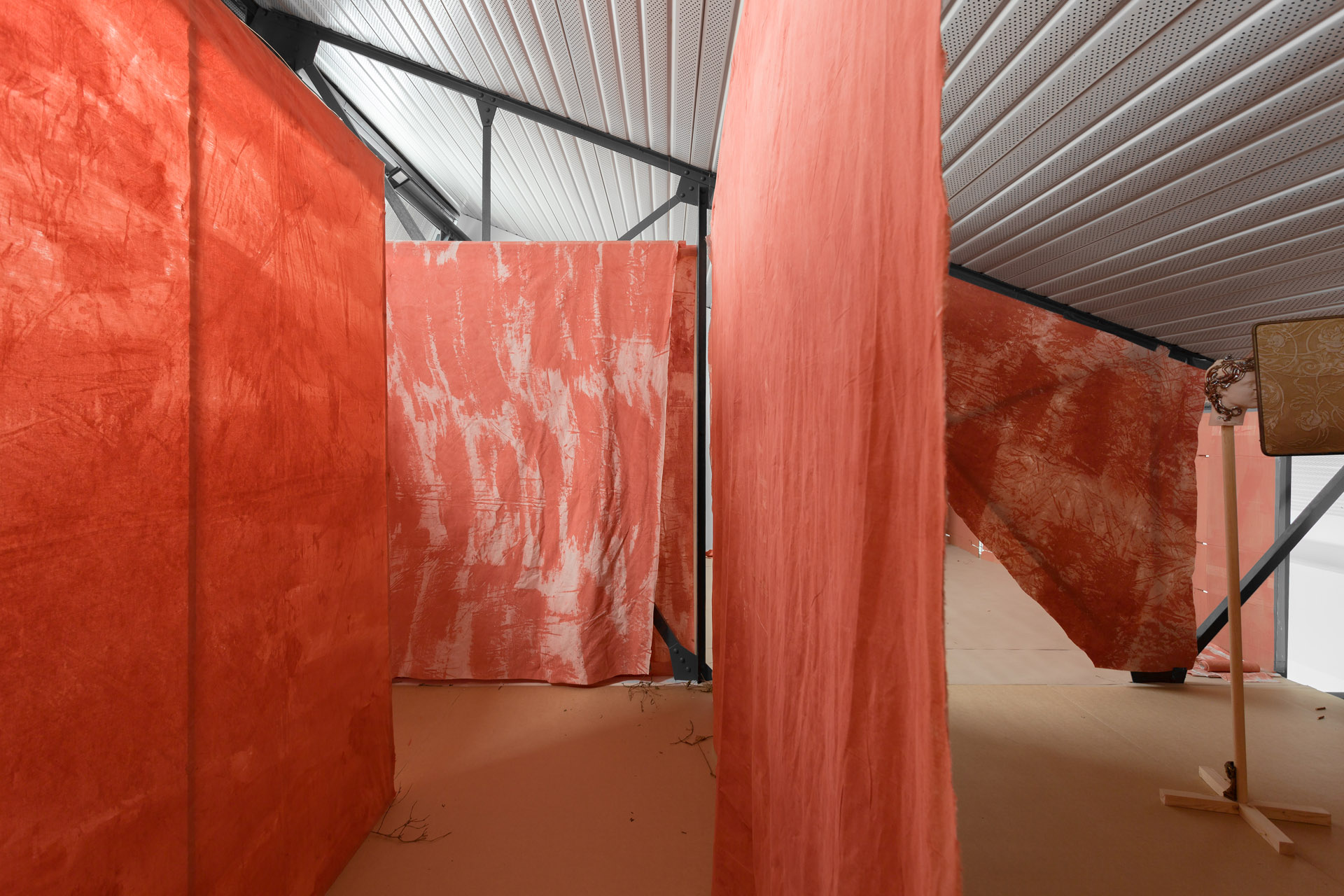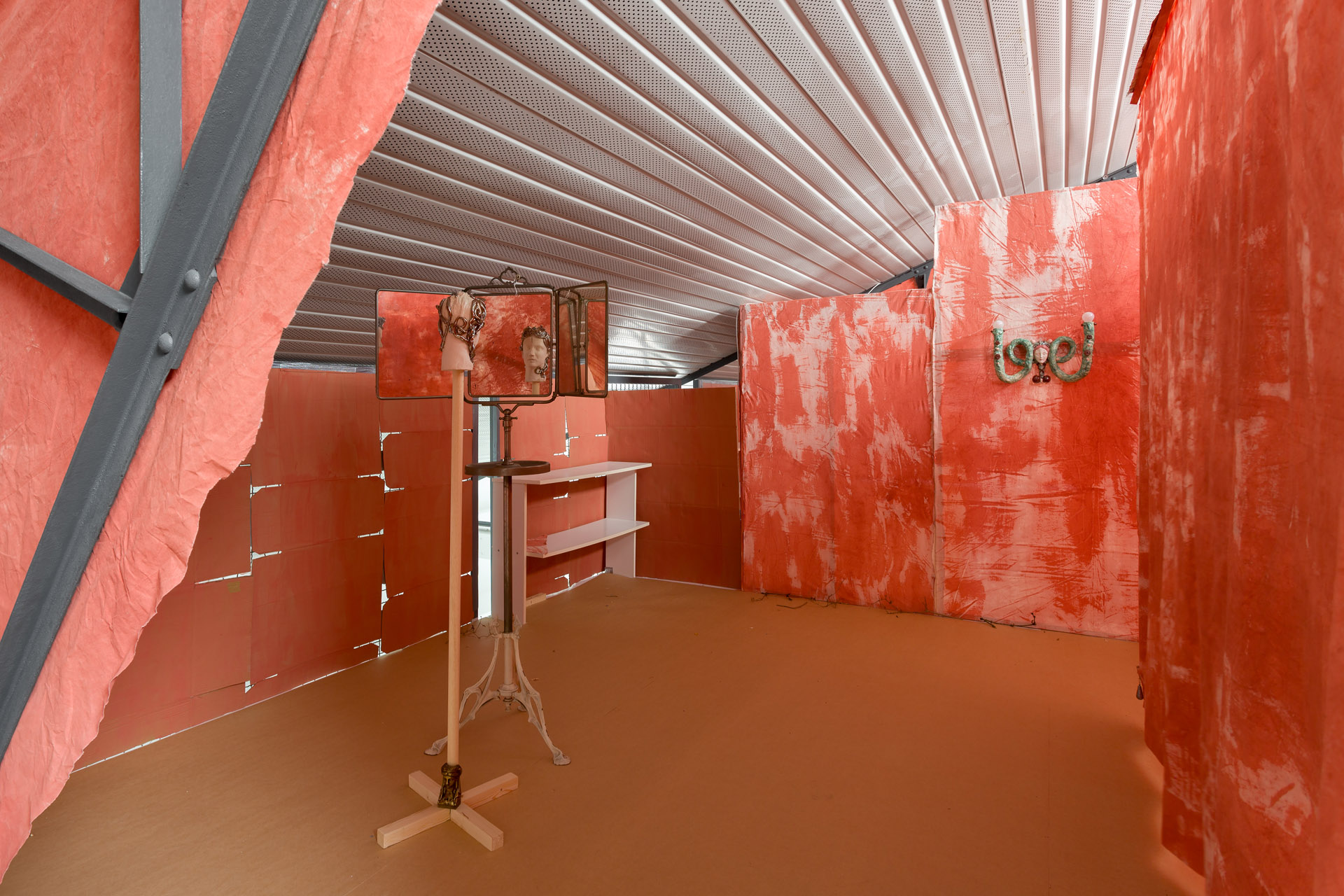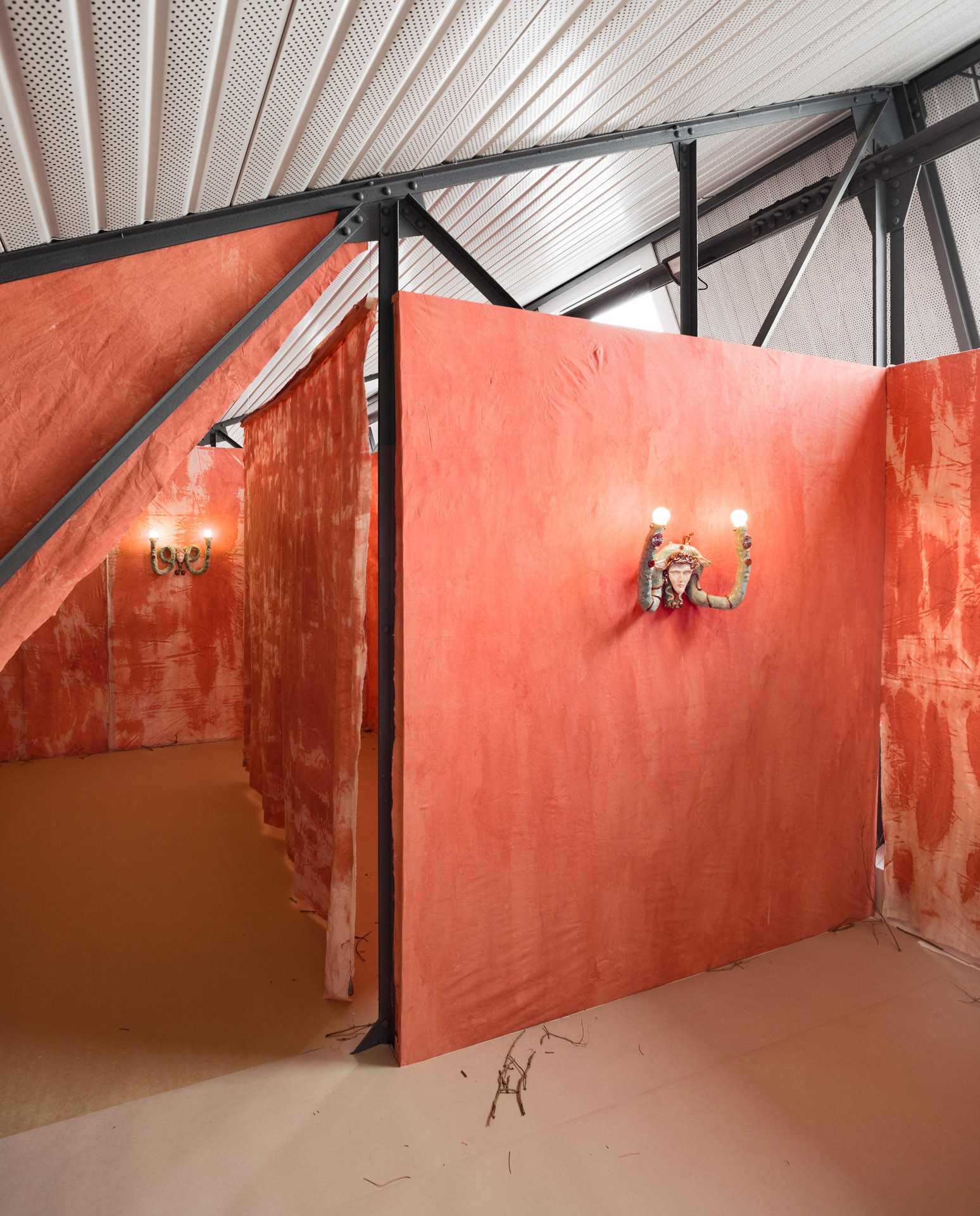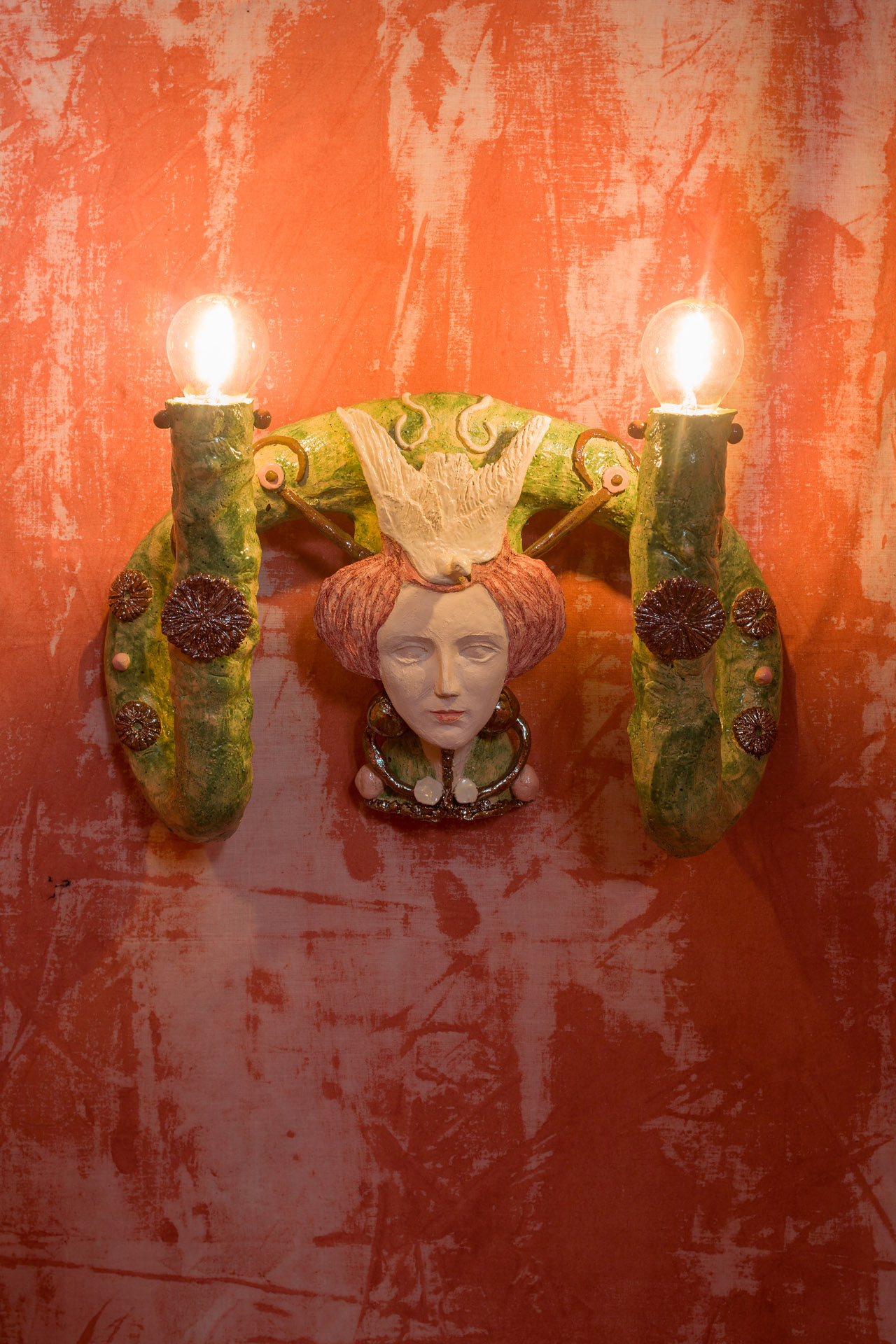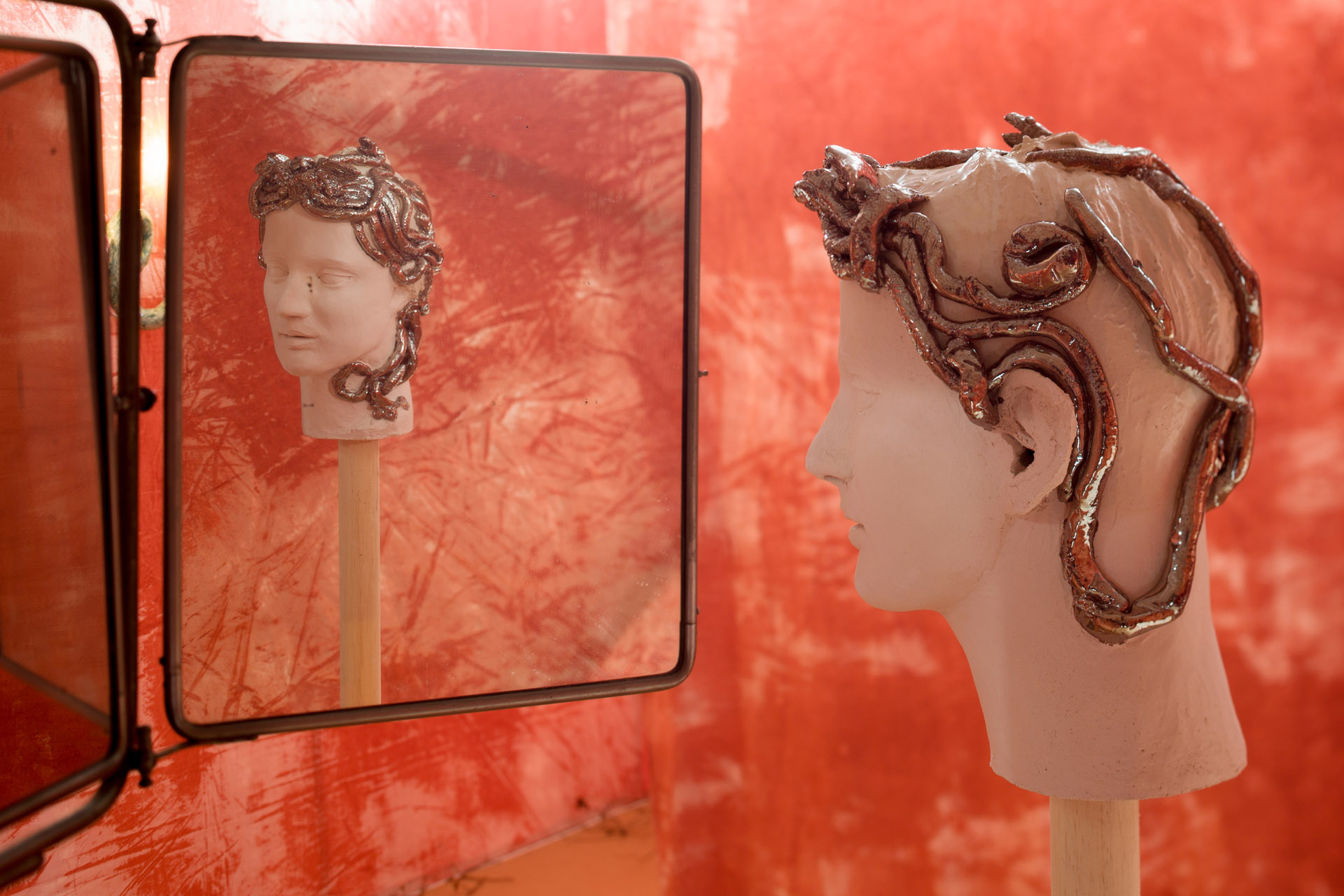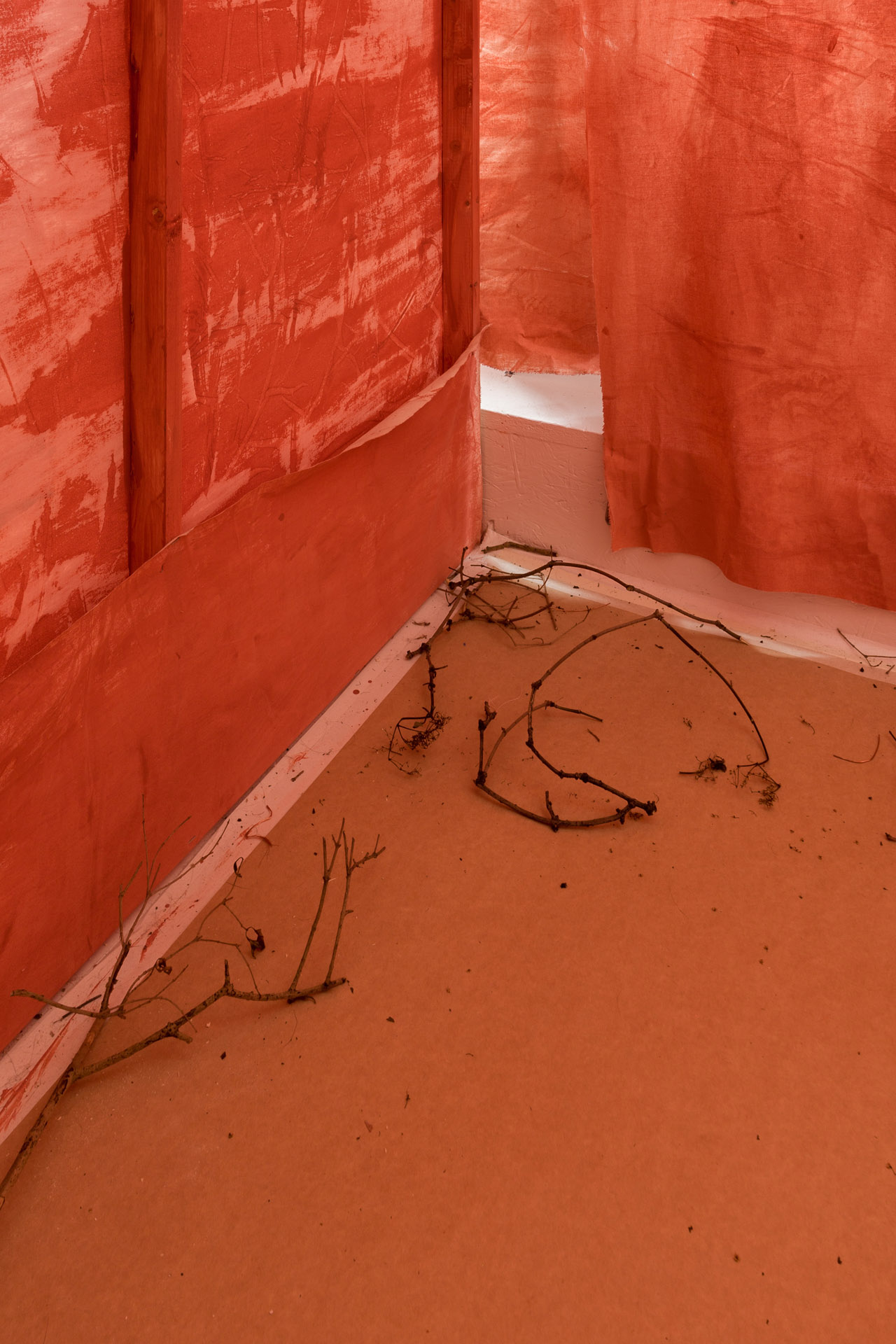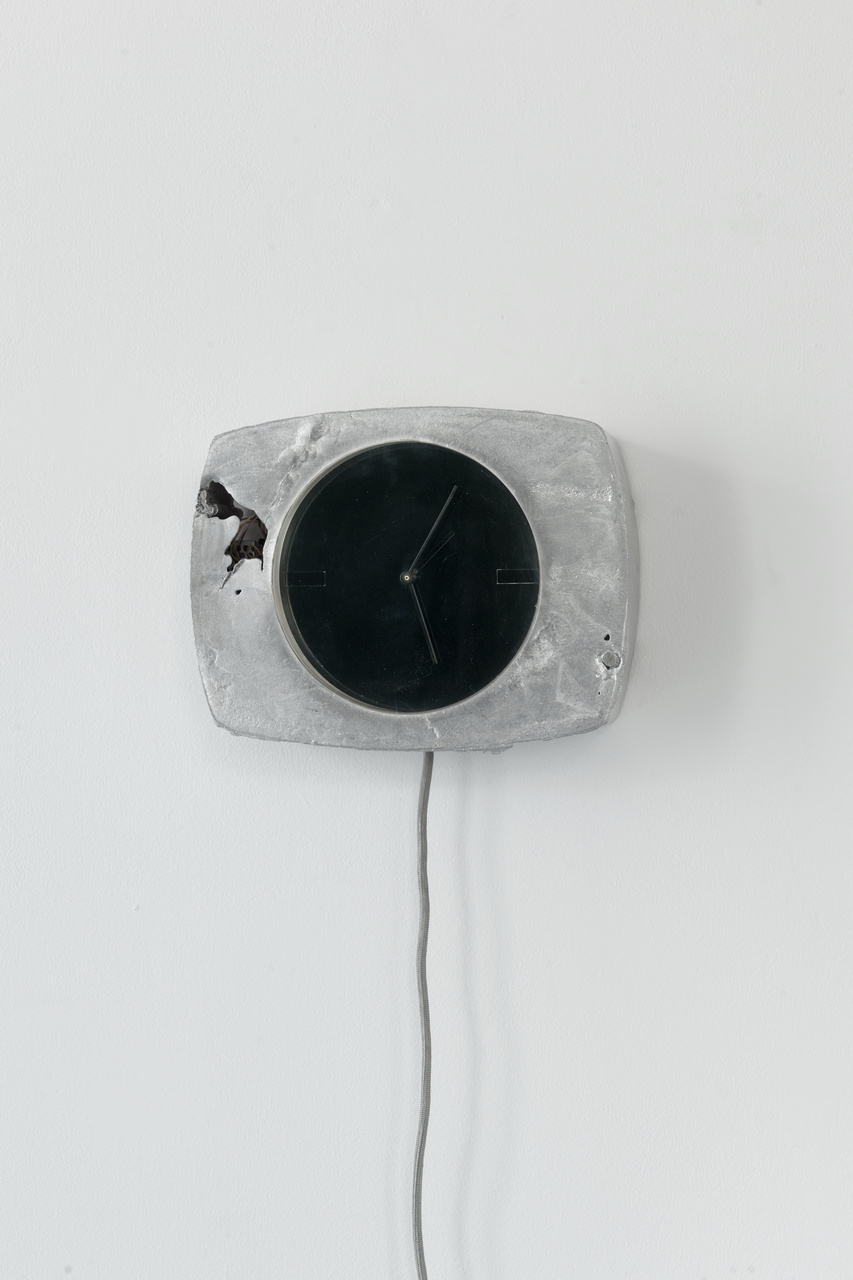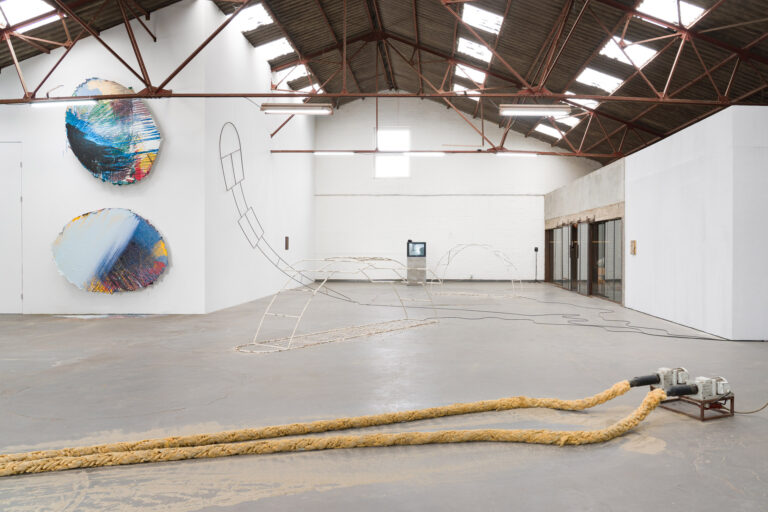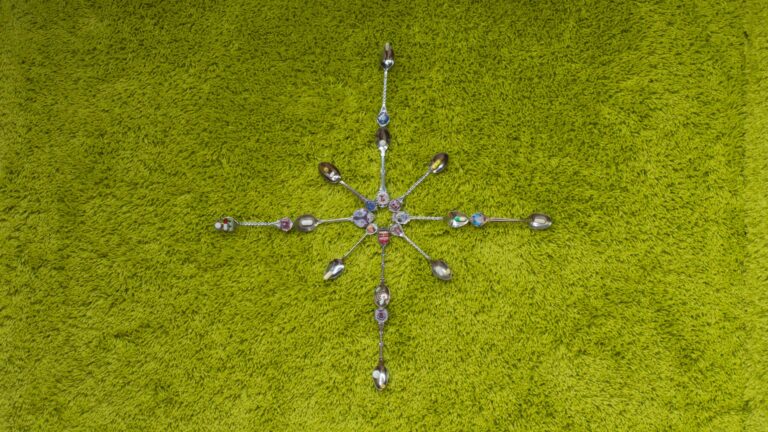Artist: Soshiro Matsubara
Exhibition title: MUSÉES ROYAUX DES BEAUX ARTS DE BELGIQUE AND ETC. / ÉTUDE
Venue: Fern, Brussels, Belgium
Date: May 10 – June 20, 2021
Photography: all images copyright and courtesy of the artist, Fern, Brussels and Croy Nielsen, Vienna
Romantic endeavours and the manifestations of tragic lovers are Soshiro Matsubara’s main preoccupation. This is no different for his latest presentation at FERN— a new residency set up by Matthias Medaer and Vincent Vanden Bogaard. Both founders, invited for their first show the Japanese born -Vienna Based artist. The sculptural potential of a lovers’ tragedy unites old and new work, where some are portrayed in the form of domestic objects like lamps, coat racks and fruit bowls as well as figurative ceram-ics which are all exhibited in the private home of one of FERN founders.
Characterised in the form of a multidisciplinary practice spanning paintings, ceramics, readymade objects, and mock-ups of a gallery space, Matsubara offers a renewed narration of morally complex, contradictory, and often violent famous love stories. Such stories include Viennese expressionist painter Oskar Kokoschka’s life-size doll meant to look like forgotten composer Alma Mahler to fill the emptiness he experienced after their split, or Belgian Symbolist painter Fernand Khnopff whose fixation with his sister raised rumours and turned him into a symbol of “forbidden” love. With the presentation set in Brussels, another complex love story comes to mind: that of Belgian painter René Magritte and his wife Georgette Berger.
It is not only the relationship of the famous surrealist artists that inspired Matsubara to create a new set of glazed sculptures for the presentation of FERN, so did his many visits to the Royal Museum of Fine Arts in Brussels. In his show, titled and dedicated to the museum – MUSÉES ROYAUX DES BEAUX ARTS DE BELGIQUE AND ETC. / ÉTUDE -, an angel-like Medusa, charged with a sense of impending doom, re-appears in different alterations throughout the presentation, as a domestic object (a lamp or a fruit bowl) hovering between the mythical and the mundane, or engraved on the he back of Georgette Berger, the wife of the famous surrealist painter. The ceramics, covered with shiny metal dots that contrast sharply with their shimmering aquamarine back-ground, were inspired by two Belgian sculptors silversmith Philippe Wolfers, known for his refined Art Nouveau jewellery, and Fernand Khnopff’s work Tête de Medusa. The Greek goddess, a recurring protagonist in the artist’s work, raises complex issues of power and equality, a subtle ode to the female victims.
Somewhere else in the room a milky-light face of Georgette Berger emerges seemingly gloomily. Her sight appears to be rising from a foamy sea mist, with wide eyes and thin lips juxtaposed with a ceramic copy of her husband’s renowned pipe. In his work Matsubara’s sets a mood, driven by his fascination for desire and misogyny the artist appropriates classical images as well as technique and places his protagonists in an atmosphere of despair. In a way, the figure of Georgette Berger references the many occasions Belgian painters such as Constant Montals, Franz Van Stock or Jean Deville (the artist references) depicted female fig-ures as beautiful fragile pale-skinned helpless beings, surrounded by nature or objects of luxury. Though western art has changed drastically over the past few years, the representations of women and their voice remain critical.
For the occasion, Matsubara created a life-size maze of dark brown painted textile walls, which can only be entered on slippers, with the newly produced ceramics scattered throughout. The maze invites its visitors to wander with the promise of unexpected-ness and a play on the seen and the unseen. The idea of the maze has been immortalised in countless real and fictional stories, the most famous of which is the turbulent affair of the Cretan princess Ariadne, who helped Theseus escape from the Minotaur’s maze only to be abandoned by him on the Greek island of Naxos shortly afterwards. Again Soshiro Matsubara sets a mood of love, abstinence and its derived feeling of sickness. The artist’s interest in the reciprocal relationship between artistic practices and mechanisms of display isn’t new. For the exhibition LoveSick at the Berlin gallery Schiefe Zähn Soshiro showed a mock-up of the gallery creating an alternate presentation of the show. In 2021, Macro Rome showed a life-sized Maze (first version) made out of cardboard. The artist’s interest in set-design is a subtle reminder that ideas about spaces are subjectively constructed like ideas about romance and love.
FERN’s six-week residency offers a stay in one of the founder’s private homes. Reading the newly produced sculptures against this backdrop we enter a domestic environment. We read the rooms while we walk through the presentation, we feel the inti-macy of a private space enhanced by the use of fabrics, we see the artist’s lavish use of naked breasts, female genitalia and Art Nouveau’s chic colour-glazing. The artist contrasts a shy sense of private habitat with an imaginative exhibition arrangement, playing with semi-domestic objects (ceramic lamps, textile walls and fruit bowls) that fuse poetry and gender in Soshiro Mat-subara’s universe of mythological creatures and figures in which, as in a dream, roles, human genders and demigods are juxtaposed and blended.
-Isabelle Van Bos


